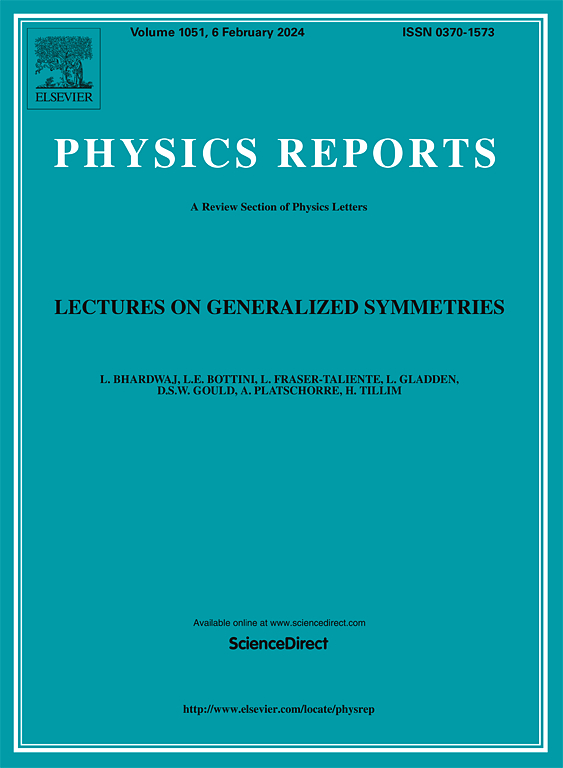Large fluctuations and primordial black holes
IF 29.5
1区 物理与天体物理
Q1 PHYSICS, MULTIDISCIPLINARY
引用次数: 0
Abstract
In this paper, we review in detail different mechanisms of generation of large primordial fluctuations and their implications for the production of primordial black holes (PBHs) and scalar-induced secondary gravity waves (SIGW), with the ultimate aim of understanding the impact of loop correction on quantum correlations and the power spectrum. To accomplish the goal, we provide a concise, comprehensive, but in depth review of conceptual and technical details of the standard model of the universe, namely, causal structure and inflation, quantization of primordial perturbations and field theoretic techniques such as “in-in” formalism needed for the estimation of loop correction to the power spectrum. We discuss at length the severe constraints (no-go) on PBH production in single-field inflation imposed by appropriately renormalized quantum loop corrections, computed while maintaining the validity of the perturbation framework and assuming sufficient inflation to address the causality problem. Thereafter, we discuss in detail the efforts to circumvent the no-go result in Galileon inflation, multiple sharp transition (MST)-induced inflation, and stochastic single field inflation using an effective field theoretic (EFT) framework applicable to a variety of models. We provide a thorough analysis of the Dynamical Renormalization Group (DRG) resummation approach, adiabatic and late-time renormalization schemes, and their use in producing solar and sub-solar mass PBHs. Additionally, we give a summary of how scalar-induced gravitational waves (SIGWs) are produced in MST setups and Galileon inflation. Finally, the PBH overproduction issue is thoroughly discussed.
大波动和原始黑洞
在本文中,我们详细回顾了大原始波动的不同产生机制及其对原始黑洞(PBHs)和标量诱发的次级引力波(SIGW)产生的影响,最终目的是理解环路修正对量子相关性和功率谱的影响。为了实现这一目标,我们对宇宙标准模型的概念和技术细节,即因果结构和膨胀、原始扰动的量子化以及场论技术(如估计环路修正对功率谱的影响所需的 "入-入 "形式)进行了简明、全面而深入的回顾。我们详细讨论了适当重规范化的量子环校正对单场膨胀中 PBH 产生的严格限制(不允许),这些量子环校正是在保持扰动框架的有效性和假设充分膨胀以解决因果关系问题的前提下计算得出的。此后,我们详细讨论了在伽利略膨胀、多重急剧转变(MST)诱导的膨胀和随机单场膨胀中,利用适用于各种模型的有效场论(EFT)框架规避 "不成功 "结果的努力。我们全面分析了动态重正化组(DRG)重和方法、绝热和晚期重正化方案,以及它们在产生太阳和亚太阳质量 PBHs 中的应用。此外,我们还总结了标量诱导引力波(SIGWs)是如何在 MST 设置和伽利略膨胀中产生的。最后,我们还深入讨论了 PBH 过度产生的问题。
本文章由计算机程序翻译,如有差异,请以英文原文为准。
求助全文
约1分钟内获得全文
求助全文
来源期刊

Physics Reports
物理-物理:综合
CiteScore
56.10
自引率
0.70%
发文量
102
审稿时长
9.1 weeks
期刊介绍:
Physics Reports keeps the active physicist up-to-date on developments in a wide range of topics by publishing timely reviews which are more extensive than just literature surveys but normally less than a full monograph. Each report deals with one specific subject and is generally published in a separate volume. These reviews are specialist in nature but contain enough introductory material to make the main points intelligible to a non-specialist. The reader will not only be able to distinguish important developments and trends in physics but will also find a sufficient number of references to the original literature.
 求助内容:
求助内容: 应助结果提醒方式:
应助结果提醒方式:


